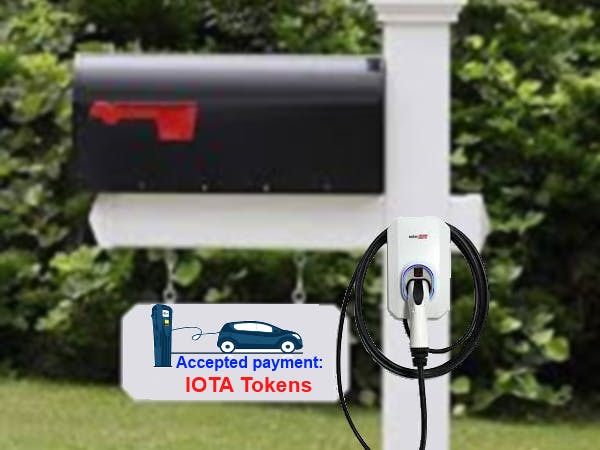From the electric vehicle user's point of view, the biggest challenge with EV usage is the scarcity of charging stations if they drive far away from home. One solution is the uberisation of EV charging: each EV owner let other EV users use his/her EV charging station. Then there will be as many charging stations available to you as the number of EV owners, and with an availability everywhere there is population.
One incentive for the EV owner to open their private charging station to others is to earn a small service fee per charging in addition to the cost of electricity. Given that a full charge for 200km is only about €3, the service fee has to be low in order to be acceptable by the users. IOTA targets transactions of that amount. Then at the end mount of month, they can convert IOTA tokens to cash at one time, minimizing the bank fees.
User manual for EV charging service providerFrom uber-ev.com web site (a simulation), you enter your password (called IOTA seed) to generate a unique IOTA address. Your password is defined by you and you keep it secret. The generated address is meant to be known by all, your clients pay IOTA tokens to that address, and that is the only way you get payed in exchange of the charging service that you provide. Your password is very important, it allows you to actually cash in the IOTA tokens payed to your address.
Your IOTA address is also displayed in QR code when you generate it. Print it and stick it on your charging station.
User manual for EV charging clientLet you guide by the app and its map to a nearby available charging station. When you are in front of the charging station and after plugged in your EV, use the app to scan the QR code, then press the Start button to start charging. On the app display, you monitor the current amount due and the quantity of electricity that has been charged. Press Stop button at any time to stop the charging and thus the payment amount, just as you do with fuel charging at a gas station.
During the charging, the IOTA tokens flows continuously from your IOTA address to the service provider's address, in small quantity, say equivalent of €0.1 or 1 kwh. As soon as the tokens stop flowing to the provider's address (account), the charging station automatically shut the electric current off. Similarly, the tokens flow stops if no current comes out of the plug. This procedure of payment resolve the problem of whether to pay entirely first before getting the goods or to pay entirely only after getting the goods.
Your IOTA address must have a positive balance in IOTA tokens prior to charging.




Comments
Please log in or sign up to comment.